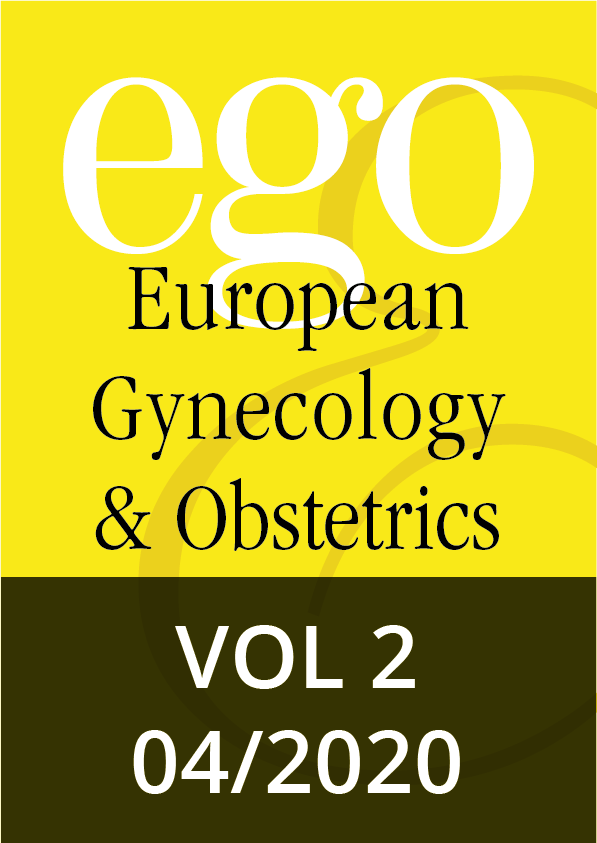Position paper, 198–204 | DOI: 10.53260/EGO.202041
Reviews, 205–209 | DOI: 10.53260/EGO.202042
Case reports, 210–213 | DOI: 10.53260/EGO.202043
Case reports, 214–217 | DOI: 10.53260/EGO.202044
Original articles, 218–222 | DOI: 10.53260/EGO.202045
Original articles, 223–233 | DOI: 10.53260/EGO.202046
Original articles, 234–238 | DOI: 10.53260/EGO.202047
Original articles, 239–245 | DOI: 10.53260/EGO.202048
Original articles, 246–248 | DOI: 10.53260/EGO.202049
Original articles, 249–254 | DOI: 10.53260/EGO.2020410
Original articles, 255–261 | DOI: 10.53260/EGO.2020411
Corpus callosum agenesis: prenatal diagnosis and neurodevelopmental outcome
Abstract
Introduction: The corpus callosum (CC) is the main commissural pathway in the brain and has an important role in the integration of information between the two cerebral hemispheres. The CC can be partially or completely absent and this anomaly can be isolated or complex (coexisting with other abnormalities). The prevalence of corpus callosum agenesis (CCA) is approximately 1:4000-1:5000 live births. The combination of antenatal ultrasound (US) and magnetic resonance imaging (MRI) is capable of diagnosing isolated forms of CCA. The purpose of this review is to assess current knowledge regarding prenatal diagnosis of CCA and the neurodevelopmental outcome of affected individuals, with a view to allowing clinicians to offer appropriate prenatal counseling.
Material and Methods: A systematic review of 62 articles regarding CCA was performed using the following databases: PubMed, Cochrane Library, Scientific Electronic Library Online (SciELO), and online Knowledge Library (B-ON). The search was restricted to English-language articles published from 1984 to 2016.
Results: In isolated CCA detected by means of US and MRI, medium- and long-term neurodevelopment is expected to be normal in approximately 75% of cases. With regard to outcomes, borderline/moderate and severe neurodevelopmental impairment have been reported in 14.92% and 12.52% of children, respectively. Fine motor control was affected in 11.74 % of cases, and 16.11% of these children suffered from epilepsy. As a result, counseling in isolated cases has been changing, and many parents choose not to terminate pregnancy when there are no other abnormalities in their fetus. However, these children may still need long-term follow up: subjects who eventually have a normal neurodevelopmental outcome may have transient mild symptoms in early life, while in other cases, abnormalities may appear later in life.
Conclusion: During the second trimester, three axial planes of the head should be obtained to assess the fetal central nervous system. Assessment of the cavum septum pellucidum (CSP) is important to rule out CCA. In the case of absence or abnormal shape of the CSP, the CC must be assessed in the mid-sagittal view of the brain. A detailed US, MRI and fetal karyotype with chromosomal microarray analysis should be offered if there is a suspicion of CCA or CCPA. Several prenatal studies have reported similar neurodevelopmental outcomes in fetuses with CC partial agenesis (CCPA) and in those with complete CCA, with delay reported in about 25–30% of cases. Nevertheless, follow up of these children is necessary in order to evaluate their neurological development. When other abnormalities are associated, the prognosis is more severe.
Keywords: chromosomal microarray analysis (CMA)., Corpus callosum agenesis, neurodevelopment, prenatal diagnosis
Citation: Fichera N.,Leanza V.,Maria Monteleone M.,Chiara Maugeri G.,Leanza G.,Carbonaro A.,et al. Corpus callosum agenesis: prenatal diagnosis and neurodevelopmental outcome, EGO European Gynecology and Obstetrics (2020); 2020/04:205–209 doi: 10.53260/EGO.202042
Published: October 1, 2020
ISSUE 2020/04

Position paper, 198–204 | DOI: 10.53260/EGO.202041
Reviews, 205–209 | DOI: 10.53260/EGO.202042
Case reports, 210–213 | DOI: 10.53260/EGO.202043
Case reports, 214–217 | DOI: 10.53260/EGO.202044
Original articles, 218–222 | DOI: 10.53260/EGO.202045
Original articles, 223–233 | DOI: 10.53260/EGO.202046
Original articles, 234–238 | DOI: 10.53260/EGO.202047
Original articles, 239–245 | DOI: 10.53260/EGO.202048
Original articles, 246–248 | DOI: 10.53260/EGO.202049
Original articles, 249–254 | DOI: 10.53260/EGO.2020410
Original articles, 255–261 | DOI: 10.53260/EGO.2020411
